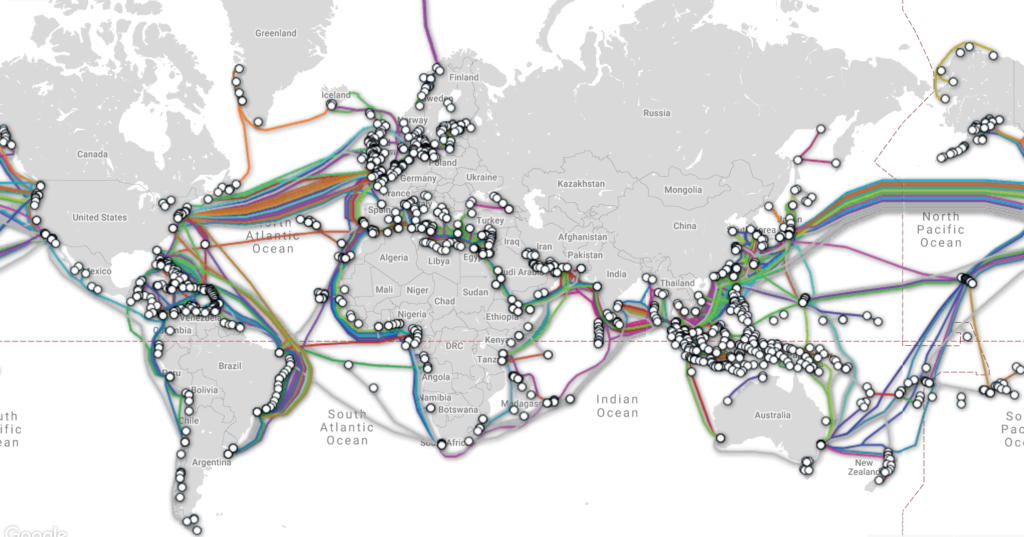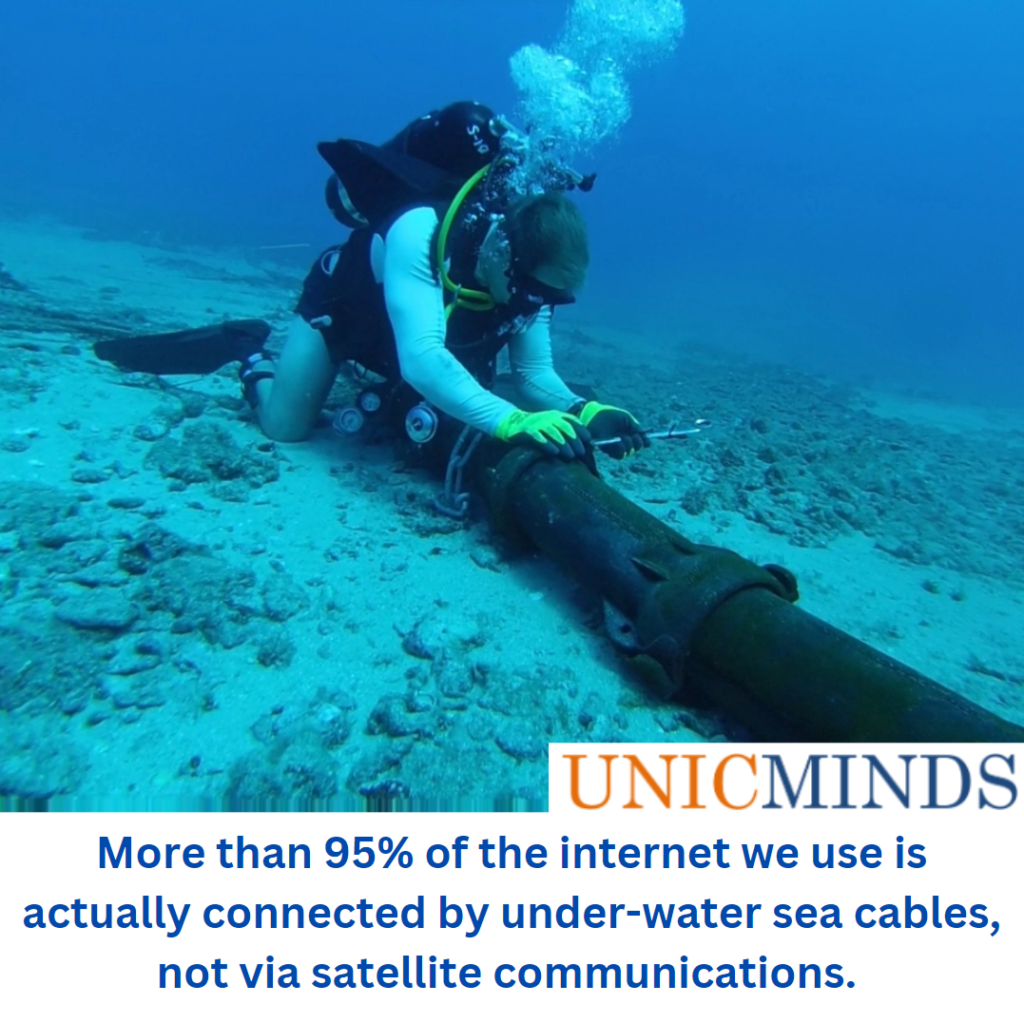More than 95% of the Internet you use anywhere in the world travels through the tiny optical fibers connected via. Land (and therefore Sea). Contrary to your beliefs, only a very tiny portion of the Internet actually uses satellite communications. The majority (more than 95% of global internet) runs on under-sea cables. In this post, we understand why is it so, and why we also deep-dive into the beauty of under-water optical fiber cable communications.
While the optical fibre cable is just like a hair strand, the overall layers and coating around it protects it from all the wear and tear under the sea. In the below picture, the last labelled part 8 is the actual optical fibre cable.


But why take the pain to lay and maintain cables under the sea when we can use the satellites?
There are four main reasons why satellites are not used: cost, latency, bandwidth, data loss, and power-efficiency.
- Satellites are hugely more expensive to manufacture, put up and maintain than underwater cables. This is exacerbated by satellites typically having an effective life of less than 10 years, compared to undersea cables operating for many decades.
- The geo-stationary satellites typically used for communication are a very long way from Earth, over 35,000km high, which means that sending data one way is 70,000km, and round trip is 140,000km. That’s a lot of delay (called latency) even at light speed, which makes any real time communication very difficult, not to mention online gamers extremely unhappy! This latency is often demonstrated when reporters are forced to use satellite links to appear live on the news.
- Wireless communication is inherently less bandwidth capable than wired, especially compared to optic fiber, and even more so when you can simply bundle up the optic fibers to increase bandwidth further at very little additional cost. Microwave links are typically in the Gbit/sec magnitude, compared to the Tbit/sec magnitude of modern underwater cables.
- Suppose we have a two watt signal. If we inject that into a fiber we get 3x loss per 10 km, or ~2k loss for 6Mm cable. So, when we send a 2W signal from New York to London, we get 1mW. Now, compare this with satellites. Suppose we radiate 2W into space, and have a satellite with a 1m dish. Then we get (spherical spreading loss) about .0000000000000001 Watts of signal on the satellite. And we haven’t even made it back to the ground yet! Which do you prefer: 1mW or 10^-13mW?
- Satellites are limited in their voice or data transmission capacity by how much frequency spectrum is allocated to them. Whereas fiber optic cables can carry HUGE amounts of data. A single fiber optic cable is able to transmit 1 petabit/s of data. When communications companies lay fiber optic cables, each cable contains dozens, even hundreds of such individual fibers. The data carrying capacity of optical fiber is truly amazing; in fact much of the optical fiber around the world is “dark” i.e. it is laid into the ground or on the ocean floor but is not used to carry active traffic because we don’t generate sufficient traffic as of now!
- Even if you allocate a large portion of frequency spectrum to a satellite, satellites inherently have power constraints. Satellites generate power in space using solar panels which limits how much processing they can do. Yes, you can add more or larger solar panels, but even then the capacity is far short of optical fiber’s capacity.
The below map shows the under-water sea connections laid as of 2023 across the world. This is the under-sea world that is running the internet, not the satellites!

Hope this is useful, thank you.
You may like to read:
How transistors become the CPUs we use?




